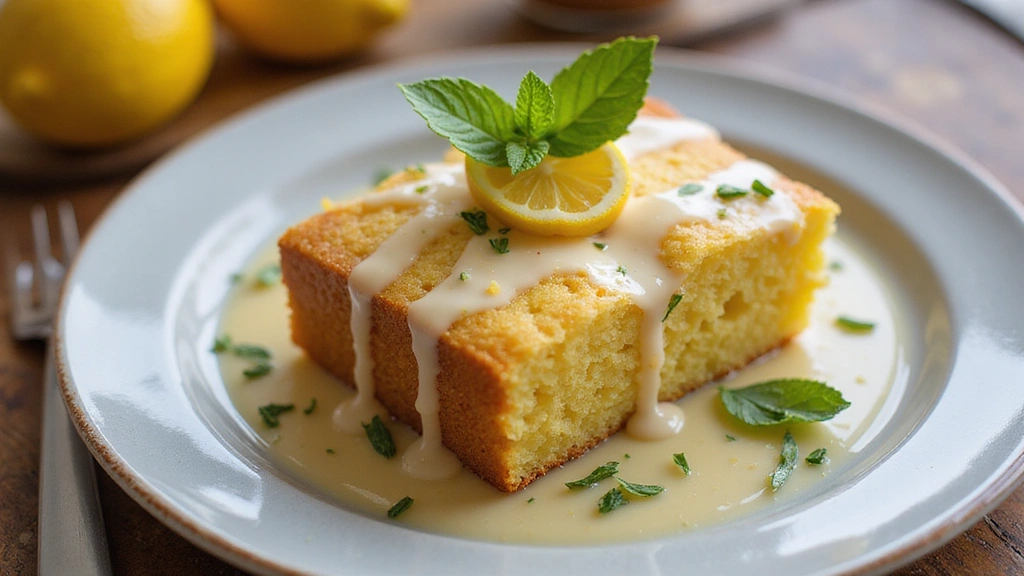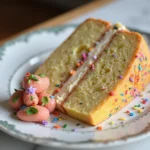Lemon Drizzle Cake is a delightful treat that captures the essence of vibrant flavors in every bite.
The zesty lemon flavor combined with a soft, moist cake creates a refreshing experience that can brighten any day.
I first encountered this cake during a summer gathering, where its bright flavor stood out among the desserts.
Perfect for afternoon tea or a celebratory gathering, this cake is simple to make yet impressively elegant.
The History and Cultural Significance
• Lemon Drizzle Cake traces its origins to the United Kingdom, where it became popular in the 19th century.
• The dish evolved over decades as home bakers began to incorporate fresh lemon juice and zest, eventually becoming the beloved version we know today.
• In British culture, this cake traditionally appears at tea time and family gatherings, symbolizing warmth and hospitality.
• While many variations exist across different regions, the authentic version maintains its signature lemony glaze that sets it apart from imitations.
Recipe Overview
Nutritional Information (per serving)
Ingredients
Essential Equipment Guide
Mixing Bowl: A good mixing bowl is essential for combining the ingredients thoroughly. Look for a bowl that is large enough to hold the batter without spilling, preferably made of glass or stainless steel for durability.
Loaf Pan: The loaf pan is crucial for shaping the cake correctly. A non-stick pan is recommended to ensure that the cake releases easily after baking. Consider using a pan with a heavy bottom for even heat distribution.
Electric Mixer: An electric mixer saves time and effort when creaming butter and sugar. While a hand whisk can work, a stand mixer or hand mixer provides a consistent texture and is especially helpful for aerating the batter.
Preparation Methods
Creaning Butter and Sugar: This technique is essential for incorporating air into the mixture, leading to a light and fluffy cake. Beat the butter and sugar together until they are pale and fluffy, which typically takes about 5-7 minutes with an electric mixer. Look for a texture that is creamy and light, almost like whipped cream.
Zesting Citrus: Zesting is the act of removing the outermost layer of citrus peel, which contains essential oils and flavor. Use a microplane or zester to gently scrape the zest from the lemon, avoiding the bitter white pith underneath. This technique adds a vibrant lemon flavor to your cake, enhancing its overall taste.
Drizzling the Glaze: This final step adds a sweet and tangy finish to the cake. Allow the cake to cool slightly before drizzling the glaze over the top. It should be a thin, pourable consistency that will seep into the cracks of the cake, creating a beautiful glaze.
Step 1: Prepare Ingredients

Gather all your ingredients on the counter for easy access.
Make sure to measure each ingredient accurately before you start mixing.
This ensures a smooth and efficient baking process.
Preheating the oven to the right temperature is crucial at this stage.
Step 2: Preheat the Oven
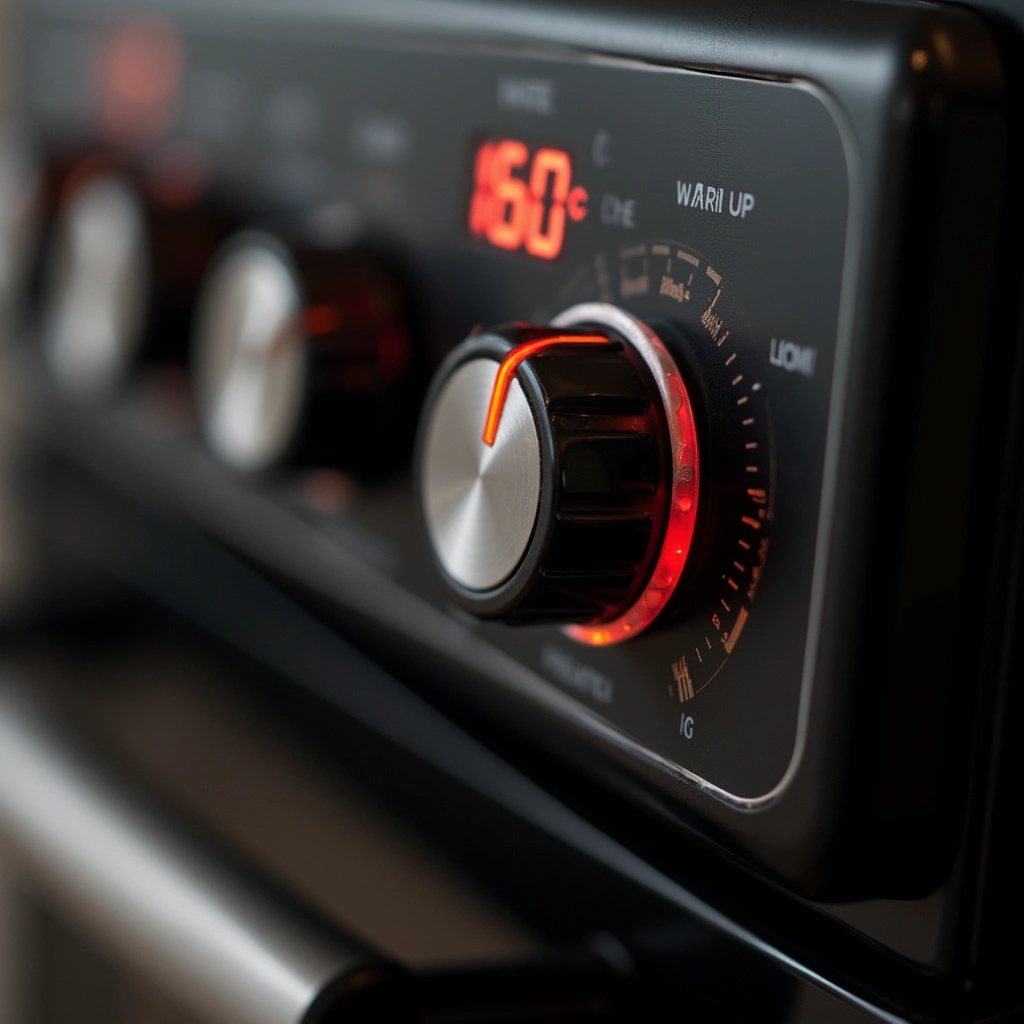
Preheat your oven to 180°C (350°F).
This allows the oven to reach the desired temperature before the cake goes in.
A properly preheated oven ensures even baking.
Avoid opening the oven door too frequently as it can cause temperature fluctuations.
Step 3: Cream Butter and Sugar

In a large mixing bowl, combine the softened butter and granulated sugar.
Using an electric mixer, beat the mixture on medium speed until it becomes pale and fluffy.
This process usually takes about 5-7 minutes, depending on your mixer.
Make sure to scrape down the sides of the bowl to incorporate all ingredients.
Step 4: Add Eggs
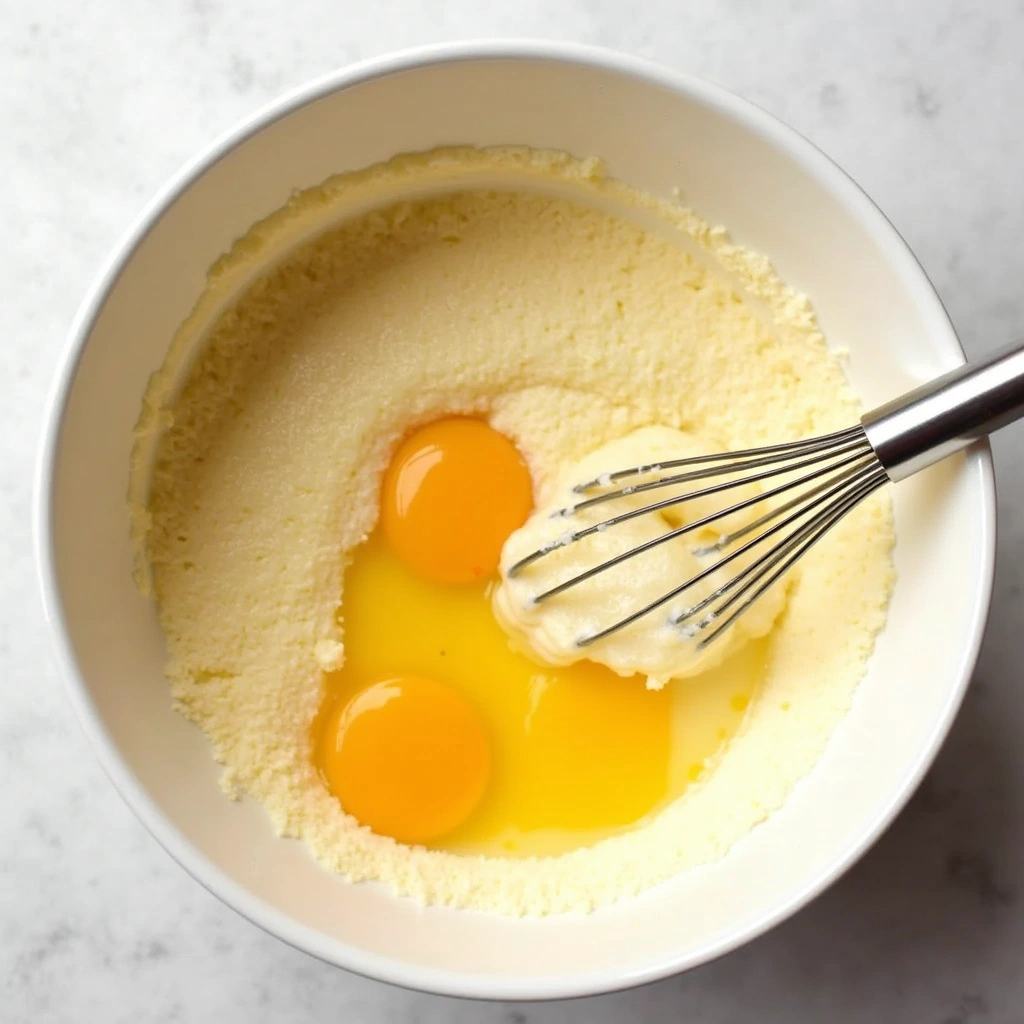
Add the eggs one at a time to the creamed butter and sugar mixture.
Mix on low speed until each egg is fully incorporated before adding the next.
This helps to create a smooth batter without curdling.
Make sure to scrape down the bowl again to ensure everything is well mixed.
Step 6: Add Zest and Vanilla
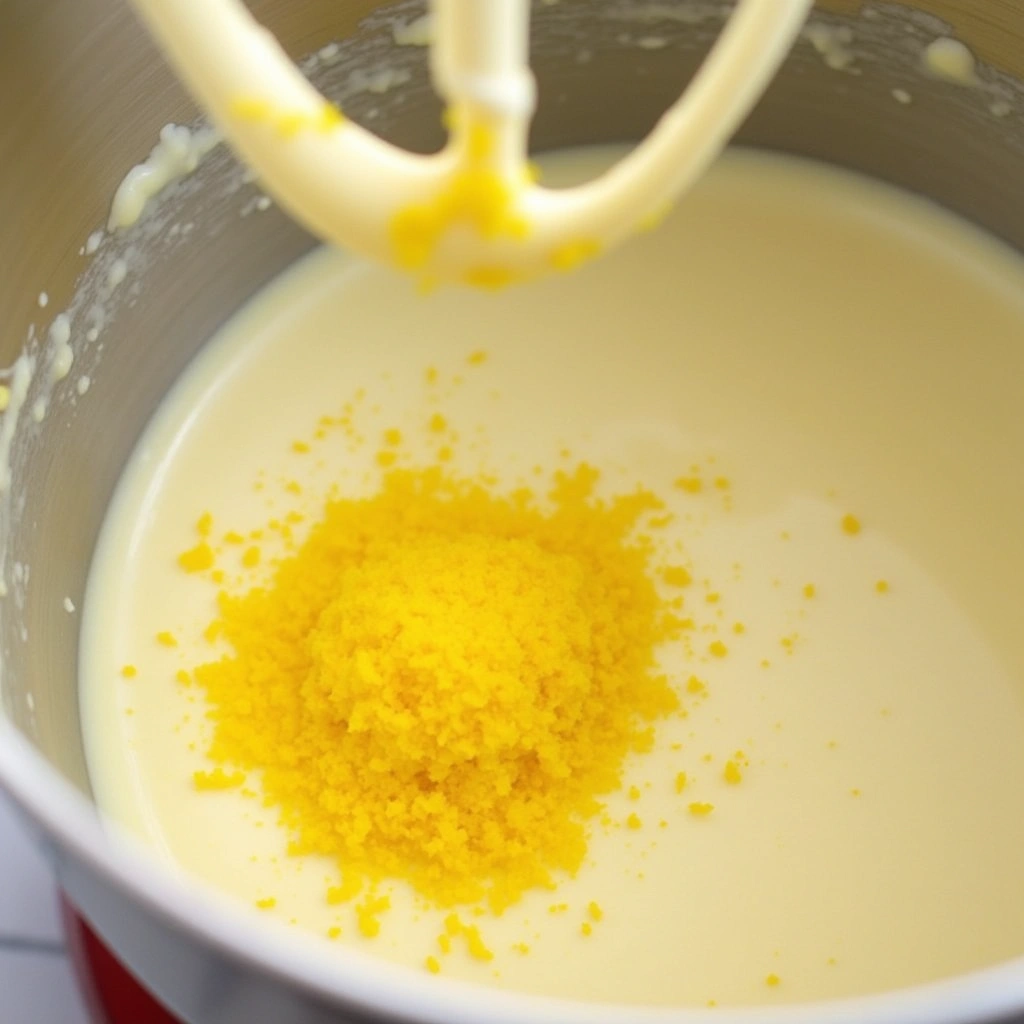
Add the lemon zest and vanilla extract to the batter.
Mix gently to incorporate the flavors without overworking the batter.
The zest should be evenly distributed for a consistent lemon flavor.
Take a moment to enjoy the fresh aroma of the lemon zest.
Step 7: Pour into Loaf Pan
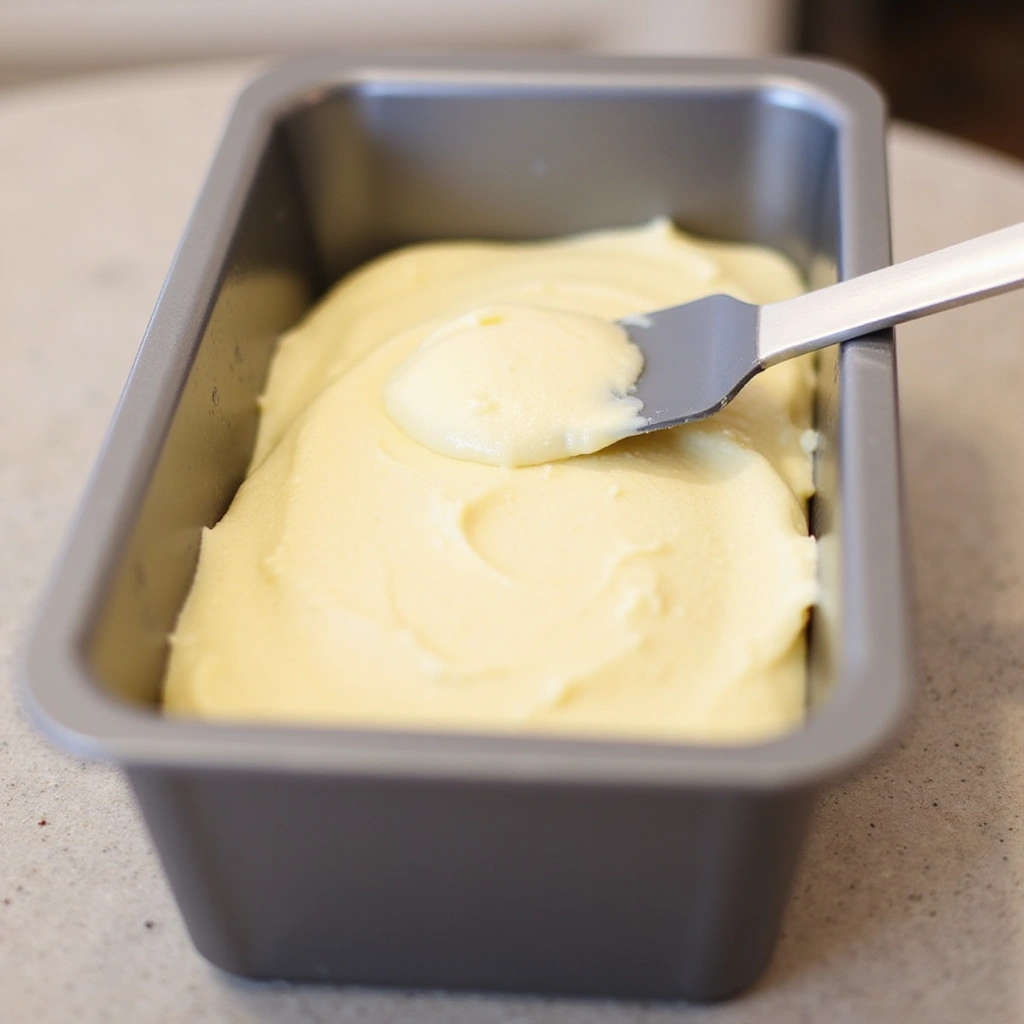
Prepare a loaf pan by greasing it or lining it with parchment paper.
Pour the cake batter into the prepared loaf pan, smoothing the top with a spatula.
Ensure the batter is evenly distributed to allow for uniform baking.
Tap the pan gently on the counter to remove any air bubbles.
Step 8: Bake the Cake

Place the loaf pan in the preheated oven.
Bake for 45 minutes or until a toothpick inserted into the center comes out clean.
The cake should be golden brown and spring back when lightly touched.
Avoid opening the oven door prematurely to maintain even baking.
Step 9: Prepare the Glaze
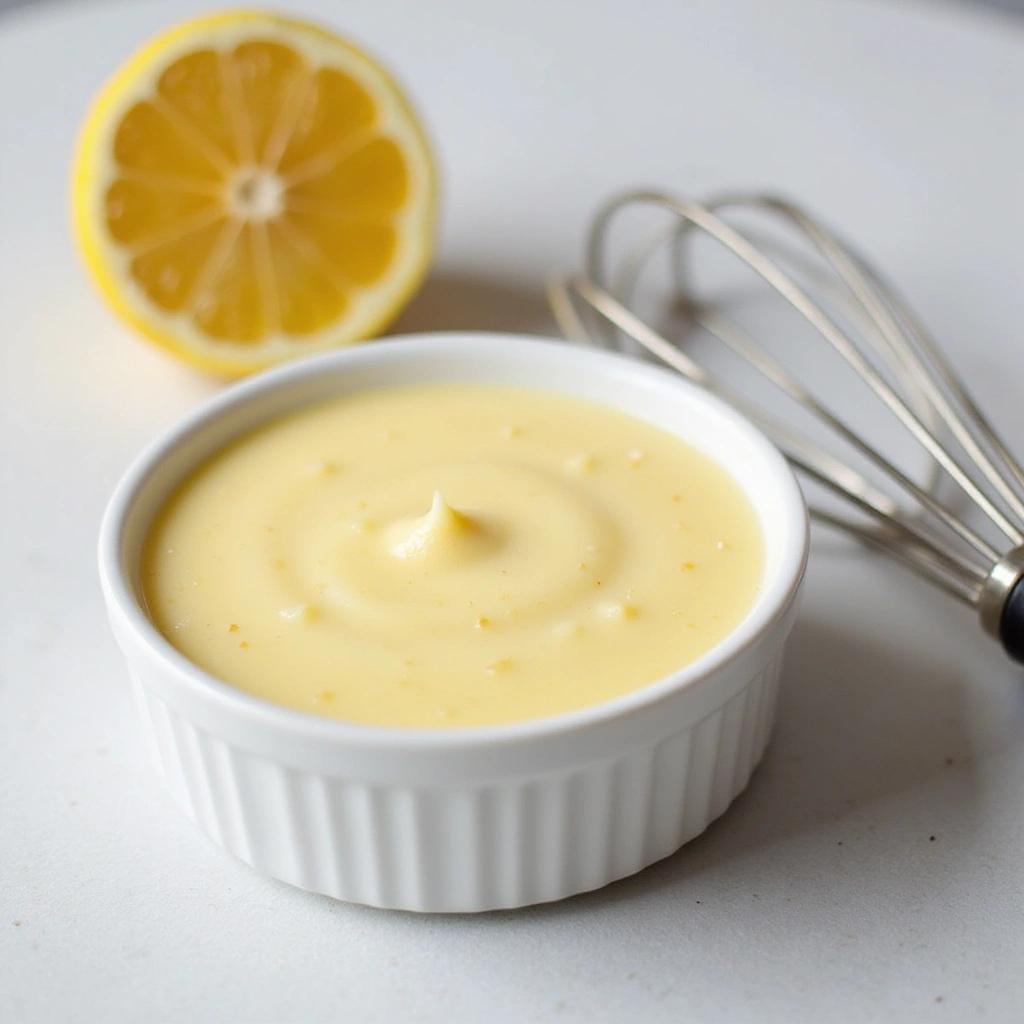
While the cake is baking, prepare the lemon glaze by mixing powdered sugar and fresh lemon juice in a bowl.
Stir until you achieve a smooth, pourable consistency.
If the glaze is too thick, add a little more lemon juice.
Set the glaze aside until the cake is ready.
Step 10: Glaze the Cake

Once the cake is baked, allow it to cool in the pan for about 10 minutes.
Carefully remove the cake from the pan and place it on a wire rack.
Drizzle the prepared lemon glaze over the top of the warm cake.
Let the glaze soak in and cool completely before slicing.
Step 11: Serve and Enjoy
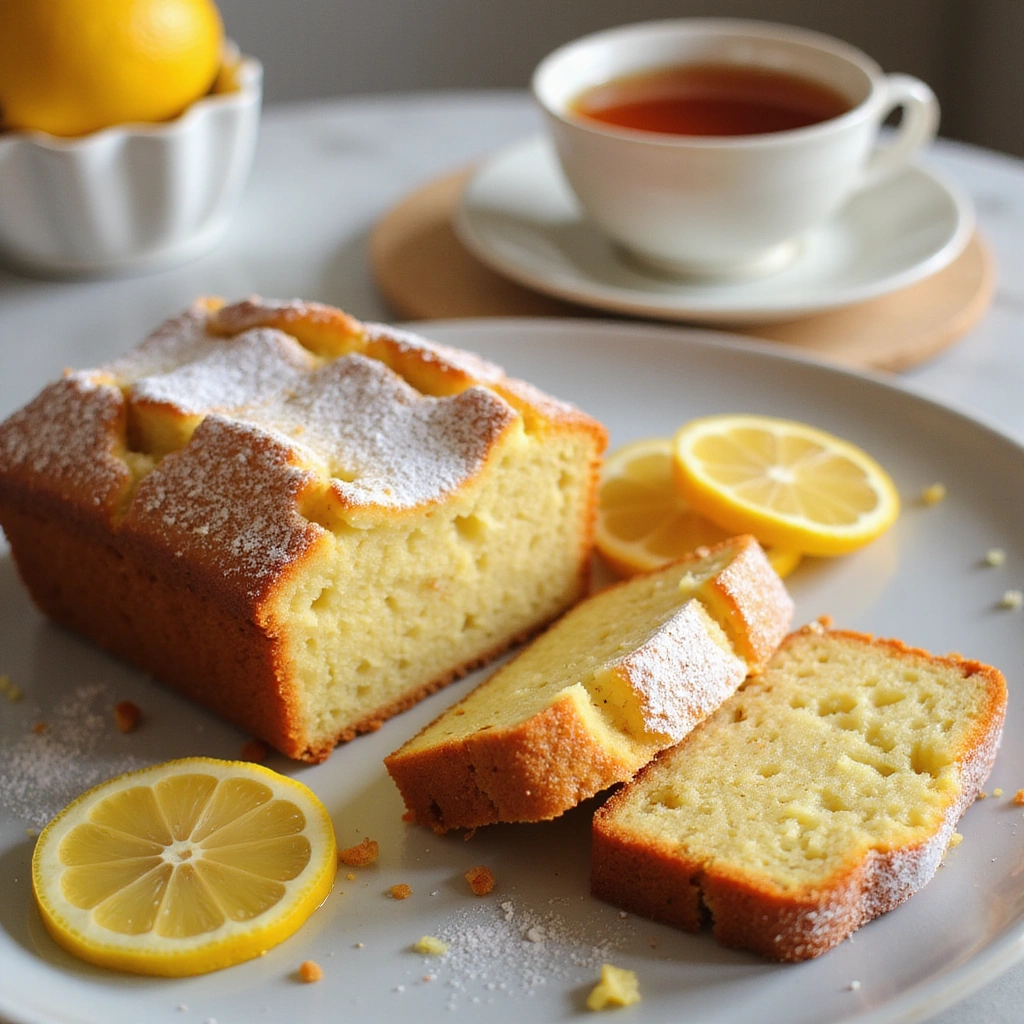
Once the cake has cooled and the glaze has set, slice it into even pieces.
Serve with a cup of tea or coffee for the perfect pairing.
The cake can be stored in an airtight container for a few days.
Enjoy the delightful blend of flavors with each bite!
Critical Timing and Temperature Guide
Baking the Cake: Bake at 180°C (350°F) for 45 minutes. The cake is done when it is golden brown and a toothpick inserted into the center comes out clean. Avoid opening the oven door too soon, as it can cause the cake to sink.
Cooling the Cake: Allow the cake to cool in the pan for 10 minutes before transferring it to a wire rack. This prevents it from becoming soggy and allows the bottom to firm up. Don’t skip this step, or the cake may break apart.
Drizzling the Glaze: Drizzle the glaze while the cake is still warm for better absorption. If the cake is too cool, the glaze may just sit on top and not seep in, resulting in a less flavorful cake.
Pro Tips for Lemon Drizzle Cake
• Ingredient Selection: Use fresh lemons for zest and juice, as they provide the brightest flavor compared to bottled options.
• Preparation Secret: Allow the eggs and butter to come to room temperature for better mixing and texture.
• Temperature Management: Always preheat your oven to ensure even baking, which helps the cake rise properly.
• Texture Enhancement: Be careful not to overmix the batter once you add the flour to keep the cake light and airy.
• Flavor Layering: Incorporate both zest and juice from lemons for an intense lemon flavor.
• Make-Ahead Strategies: The cake can be made a day in advance; just store it in an airtight container.
• Restaurant-Quality Finishing Touches: Garnish with thin lemon slices or edible flowers for an elegant presentation.
• Equipment Optimization: Use a kitchen scale for precise measurements to ensure consistent results.
Troubleshooting Common Issues
• Texture Too Dense: This can happen if the batter is overmixed or if the flour is packed too tightly. To fix this, mix the dry ingredients gently into the wet ingredients until just combined.
• Flavor Too Tart: If you find the cake too sour, consider reducing the amount of lemon juice in the glaze. You can also balance it with more sugar.
• Glaze Not Setting: Ensure the cake is warm when you apply the glaze. If the glaze is too thin, add more powdered sugar to thicken it up.
• Cake Sinking in the Middle: This can occur if the oven temperature is too low. Always preheat the oven and check its accuracy with an oven thermometer.
• Baking Unevenly: Rotate the cake halfway through baking to ensure even heat distribution. Avoid opening the oven door frequently to maintain temperature stability.
Variations and Regional Differences
• Italian Lemon Drizzle Cake: This version often includes almond flour for a unique texture and flavor. It is sometimes soaked in limoncello after baking for added richness.
• American Lemon Pound Cake: A denser version that incorporates sour cream or yogurt, resulting in a moist texture that pairs well with a citrus glaze.
• Gluten-Free Lemon Cake: Substitute all-purpose flour with a gluten-free blend, and ensure all other ingredients are also gluten-free.
• Modern Interpretations: Some contemporary recipes add berries or other citrus fruits to the batter for a fresh twist, while others might use alternative sweeteners.
Food Science Behind the Recipe
• Emulsification: The process of mixing fat (butter) with water (eggs) creates a stable mixture that helps achieve a light texture. Understanding this helps ensure your ingredients mix well without separating.
• Leavening Agents: Self-raising flour contains baking powder, which helps the cake rise. Knowing how leavening works can help you adjust recipes if you substitute ingredients.
• Flavor Development: The chemical reactions during baking, particularly the Maillard reaction, enhance the flavor and color of the cake. Monitoring baking times is crucial for achieving the best flavor.
Frequently Asked Questions
What’s the most common mistake people make when preparing Lemon Drizzle Cake? Overmixing the batter can lead to a dense cake. To prevent this, mix just until combined after adding flour.
Can I prepare components of this dish in advance? Yes, you can prepare the cake batter a day ahead and store it in the fridge. Just remember to bring it to room temperature before baking.
How do I adapt this recipe for dietary restrictions? Use dairy-free butter and a plant-based milk to make it vegan. For gluten-free options, substitute with a gluten-free flour blend.
What’s the best way to store and reheat leftovers? Store in an airtight container at room temperature for up to 3 days. To reheat, place slices in the microwave for 10-15 seconds.
Can I freeze this dish? Yes, the cake freezes well. Wrap it in plastic wrap and foil, then store in the freezer for up to 3 months. Thaw it in the fridge overnight before serving.
What wine or beverages pair best with this dish? A light, citrusy white wine such as Sauvignon Blanc complements the lemony flavor beautifully.
How can I scale this recipe up for a crowd? To scale up, simply multiply the ingredients and bake in larger pans, adjusting the baking time accordingly.
What side dishes complement this recipe best? Fresh fruit salads or a light Greek yogurt serve as refreshing accompaniments.
How do professional chefs elevate this dish for restaurant service? They often add a lemon curd filling and serve it with a dollop of whipped cream for an upscale presentation.
Serving and Presentation Guide
• Traditional Presentation: Serve slices of the cake on a decorative plate, garnished with lemon slices and perhaps a sprig of mint. This creates an inviting and fresh look.
• Modern Plating Ideas: Use a clear glass cake stand to elevate the cake, and drizzle additional glaze artistically over the top for a contemporary feel.
• Accompaniment Suggestions: Pair with a light, herbal tea or a refreshing lemonade to complement the cake’s flavors.
• Special Occasion Presentation: For celebrations, consider adding edible flowers or a dusting of powdered sugar on top for an elegant touch.
Conclusion
Lemon Drizzle Cake is a timeless dessert that brings a burst of sunshine to any occasion.
Its bright flavor and delightful texture make it a favorite among many.
I hope you enjoy this recipe as much as I do, and find it to be a delightful addition to your baking repertoire.
Happy baking!
